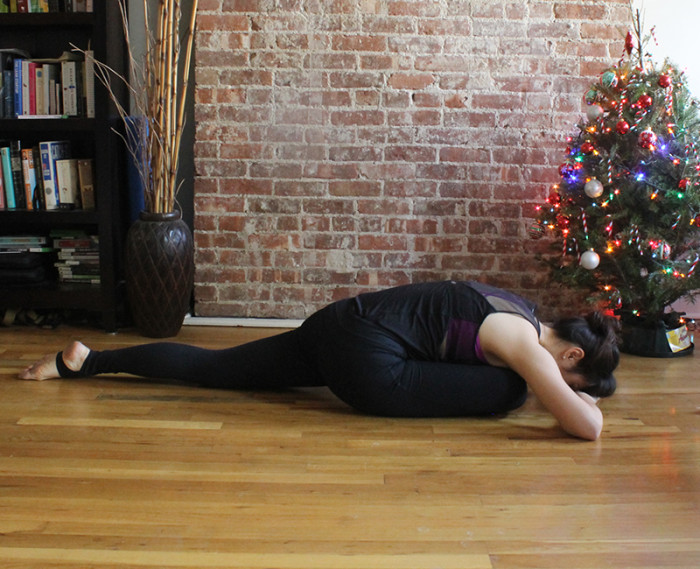“Do not look for rest in any pleasure,
because you were not created for pleasure:
you were created for joy.
And if you do not know the difference
between pleasure and joy
you have not yet begun to live.”-Thomas Merton
American Author, Monk and Mystic
In your pursuit of happiness, do you seek pleasure or joy? Do you seek outside experiences to satiate your senses, or do you seek joy in menial, even painful moments? Have you ever differentiated joy and pleasure?
We are gluttons for pleasure; we are groomed to be. We are consistently bombarded with emphasis on material accumulation and pleasure seeking products. Advertisements for beer, clothing, perfume, cars and so on, often with sexual innuendos, tell us we won’t be happy without them, as though we are in a state of void or gloom until we experience the next pleasure.
There is nothing wrong with pleasure. Eating a wonderful meal at a restaurant, wearing a new pair of shoes, and drinking an expensive glass of wine are beautiful experiences. However, the pleasure doesn’t stay with us. The pleasure is finite, and this is the difference between pleasure and joy. Seeking pleasure becomes a cat and mouse chase on a roller coaster of highs and lows. Seeking pleasure rather than joy could give rise to addictive behaviors. As any addict can tell you, once addicted there is little pleasure and much burden in what at first brought great pleasure. A pleasure can be enjoyed when appreciated as a temporary high, while one can feel joy in the moments between one pleasure experience and another.
So that is the difference between pleasure and joy, but what are the characteristics of joy? Here are three things that define joy.
“Pleasure is always derived from something outside you, whereas Joy arises from within” -Eckart Tolle
1. An experience of joy can be found at any time, and it comes from within. It becomes your fond memories, and likely has nothing to do with material possessions, rather connecting with others, gratitude, and fulfilling your potential. Joy is spontaneous, but with a few small lifestyle adjustments, it can be cultivated more often. Joy is not bestowed on a privileged population, and it is not to see the world through rosy glasses. Rather, abundant joy is practiced. Taking the joy road over the pleasure road is a conscious awakening, and is available for any person in any situation.
“For me, happiness is the joy we feel striving after our potential.”
― Shawn Achor, The Happiness Advantage: The Seven Principles of Positive Psychology That Fuel Success and Performance at Work
Shawn Achor, the happiness researcher at Harvard, offers ways to pursue joy. After studying at Harvard’s Divinity School, he realized a common prescription for happiness among Buddhists and Christians: Live in your potential. This can also be translated as “Always do your best,” one of Miguel Ruiz’s Four Agreements, being “Christ-like” or having “Buddha nature.” On a large scale, it is to know your purpose, and strive for it. This purpose can also be derived by acting from your highest self; serving others, being kind, and seeing yourself in other people’s eyes.
2. Joy also becomes more available with age and experience. When we experience painful times, we are able to appreciate the good times more. Folding laundry can bring you joy, if you can remember a time when you had to go to a laundromat and wait around for your clothing to dry, and now you have a washer and dryer in your home. You might have had that washer and dryer in your home for twenty years, but having the experience, and the gratitude to remember suddenly alleviates the burden of chores, transforming the duty as a subtle joy. Looking back at pictures of yourself as a younger person, we often see a thinner, more beautiful image of ourselves, but realize that at the time the picture was taken, we didn’t see ourselves as beautiful. This dissatisfaction in self in days past can be a disturbing thought, but it can also bring us joy in this moment, awakening us to see the beauty we possess now. What if we wrote out a body gratitude list, and recited it daily, rather than turning to magazine covers? What better way to know how precious life is than by the sickness or death of a loved one? Though we all have unique purposes in life, the common purpose we share is that we need to connect with one another. This underlies many of our adventures. Connecting with others, allowing ourselves to be seen and understood, and to understand others is a practice that ultimately brings joy. The practice of cultivating meaningful connections breaks down the fortresses we build around ourselves, allowing energy to move freely, and joy to flourish. As the Buddhist saying goes, the fundamental situation is good. When we are connected, we experience less fear, and goodness and light are revealed.
3. Joy can be experienced even in painful times. Crossing through pain without avoiding it allows one to cross thresholds, and perhaps feel more joy on the other side. Have you ever been in a pigeon pose, and relaxed into the joy of the moment? Pigeon is notorious for discomfort, and yet it is also a pose that releases amma, or negative energy. In this discomfort, we can still access joy, by going within. You can find gratitude even though your torso is bearing weight across your shin, and your hips splitting are open. It is there, if you decide to seek it. The yoga mat is a metaphor for life, and this approach can be applied in our darkest times. There is always gratitude, you can always serve others and there is always someone to connect with. By practicing a pursuit of joy rather than pleasure, we experience joy more often. As explained in yoga, we create samskaras, or imprints on the brain, that make joy more accessible with practice. The longer you implement practices to cultivate more joy, the deeper the samskara.
In your pursuit of happiness, try some of the following practices to see for yourself if you experience more joy:
– Gratitude Journal– Each night before you go to bed, write down three things that happened that day for which you are grateful. Trust me- this will make an enormous difference! Do it for at least thirty days to see results.
– Connect with someone– Call someone. People with drug and alcohol addictions are told to “pick up the phone,” and before smart phones, that meant to call someone. If connecting with someone over the phone can keep an addict from abuse, there is power to be tapped into!
– Serve others– doing for others is true soul food. An important step in this practice is to do so without expecting something in return, and refrain from documenting your good deed on Facebook. This is an inside job; do not to seek validation from the outside. Try doing something for someone else every day for a month, and see how your world transforms. It can simply be allowing the person in the other car turn before you, or collecting jackets for a local shelter.
– Meditate and do yoga– This practice of going within taps the joy we contain. Quieting the monkey brain clears away the chaos that hides the goodness and truth we seek.
“The pleasures that derive from contact with objects are the wombs of misery. They have both a beginning and an end, and thus wise take no delight in them.” -Bhagavad Gita, Chapter 5, Verse 22
What brings you pleasure, and what brings you joy?
Also by Jessica: What is Vastu? + 9 Tips for Creating a Nurturing Environment
Vegan Eggplant Stew Over Polenta
Get more like this—Subscribe to our daily inspirational newsletter for exclusive content!
__
Photo: Davide Ragusa via Barn Images






